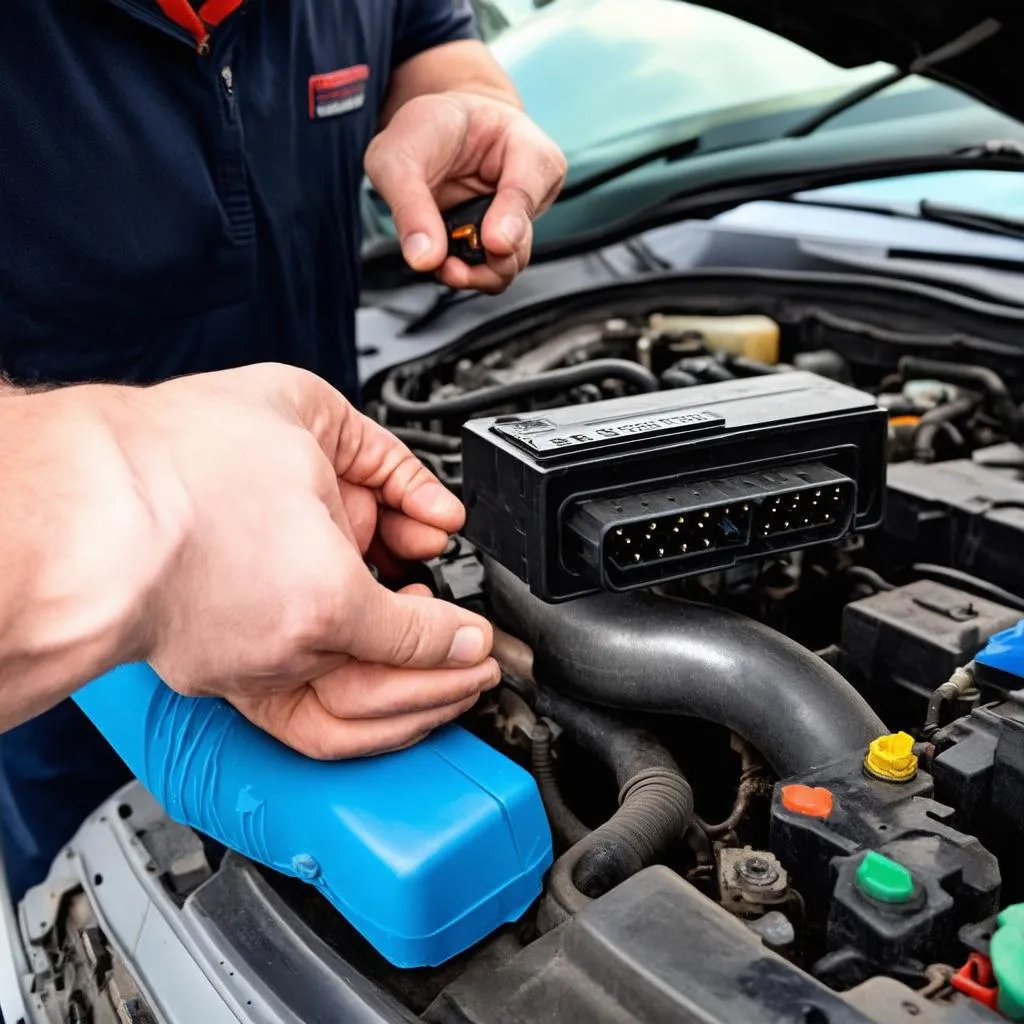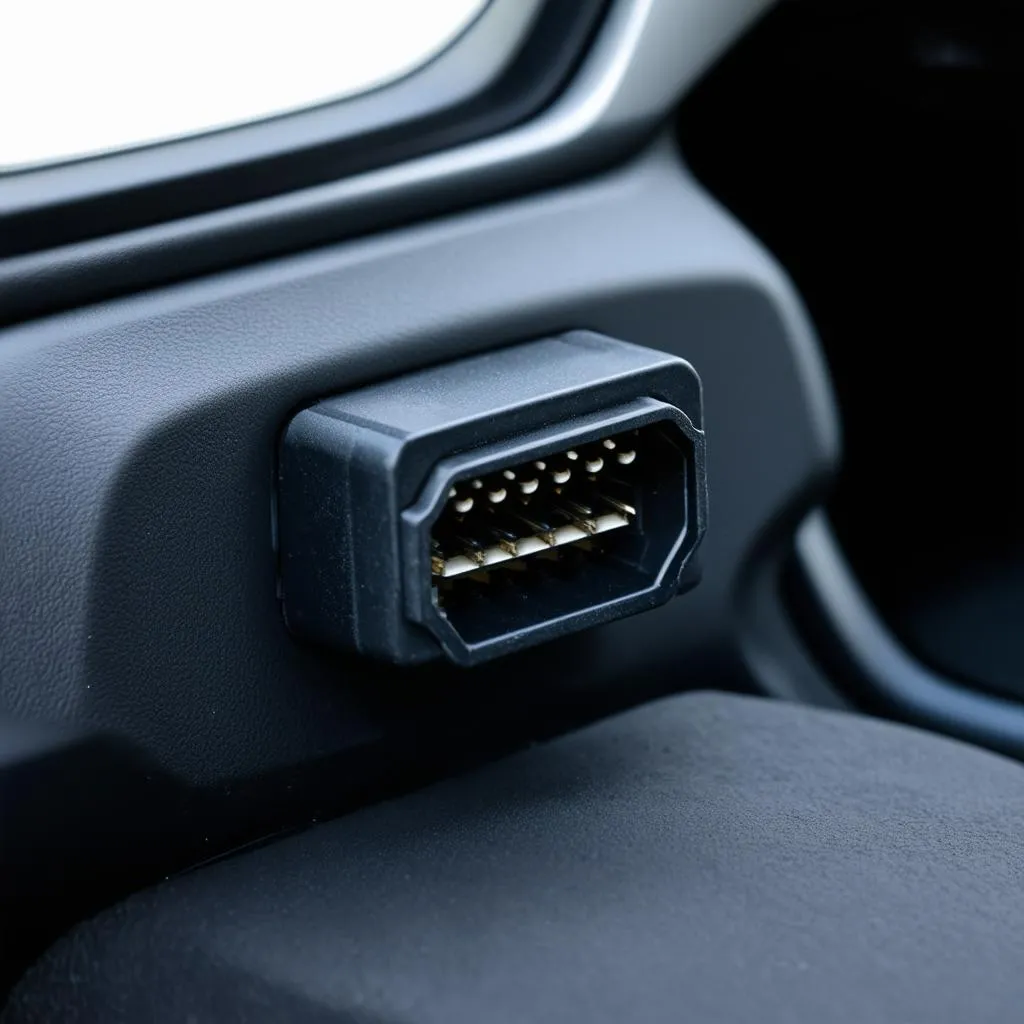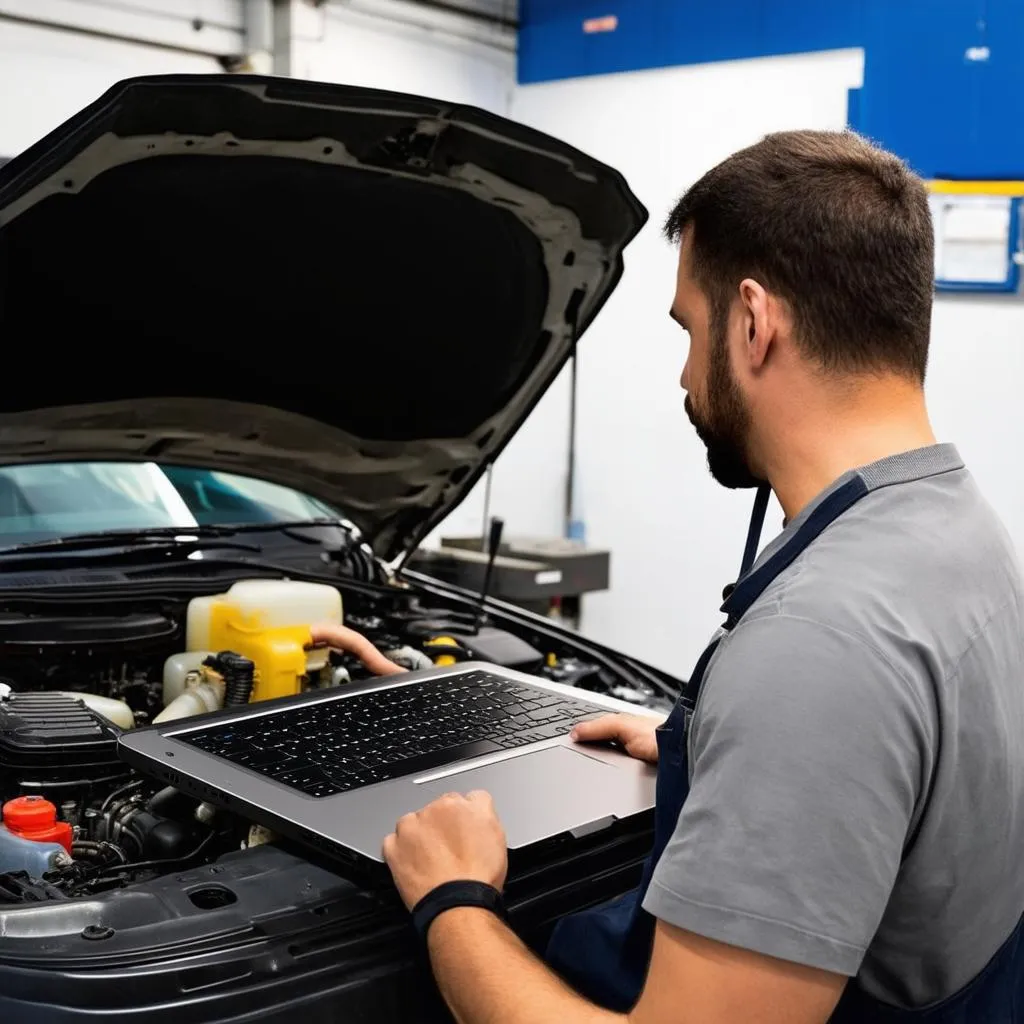Have you ever faced a frustrating situation where your diagnostic tool refuses to communicate with your European car’s OBD port? It’s like trying to have a conversation with a mute friend! This is a common problem that can leave you feeling helpless and confused.
What Does “Computer Obd Port Not Communicating” Mean?
When we talk about “Computer Obd Port Not Communicating,” we’re referring to a situation where your diagnostic scanner, or any device trying to access the vehicle’s computer, cannot establish a connection with the OBD port.
Imagine this: you are trying to understand your car’s engine using a sophisticated language translator, but the translator is unable to connect to your car’s language system. It’s like trying to decipher a foreign script without a key.
Understanding the Importance of the OBD Port
The OBD (On-Board Diagnostics) port is a vital communication channel between your car’s computer and the outside world. It’s essentially the gateway to your car’s internal system, allowing you to:
- Diagnose issues: OBD scanners can read diagnostic codes that reveal potential problems with your engine, transmission, or other systems.
- Monitor performance: You can gather information on various parameters like engine speed, fuel consumption, and emissions.
- Reset fault codes: Some scanners can erase fault codes after you’ve addressed an issue, allowing the computer to reset itself.
Why is my OBD Port Not Communicating?
Several factors can contribute to the OBD port not communicating, each requiring a different approach.
1. Check the OBD Port:
- Physical Damage: The OBD port itself could be physically damaged or obstructed, hindering the connection.
- Corrosion: Corrosion from environmental factors can block the electrical connection between the port and the scanner.
- Loose Connection: The OBD port might not be properly connected to the car’s wiring harness.
2. Scanner Issues:
- Compatibility Issues: Not all OBD scanners are compatible with all vehicles, especially European models.
- Defective Scanner: The scanner itself may be malfunctioning or damaged, rendering it unable to communicate.
- Incorrect Settings: The scanner might need to be configured to work with your car’s specific model and year.
3. Vehicle-Related Problems:
- Wiring Harness Issues: Damaged or faulty wiring within the vehicle’s harness can interrupt the communication.
- Fuses: A blown fuse in the OBD system can prevent communication.
- ECU (Electronic Control Unit) Issues: The car’s ECU might be malfunctioning, preventing it from communicating with the scanner.
Common Questions and Solutions
Q: I’m trying to connect my OBD scanner to my European car, but it says “No Communication.” What could be wrong?
A: The first step is to check the basics:
- Check for physical damage to the OBD port. Make sure nothing is blocking it, and visually inspect the port for any damage or corrosion.
- Ensure the OBD port is properly connected. Try disconnecting and reconnecting the connector to ensure a secure fit.
- Try a different OBD scanner. This helps eliminate the possibility of a faulty scanner.
Q: I’m using a Dealer-Level Scanner for European cars, but it still doesn’t communicate with my OBD port. What should I do?
A: Dealer-level scanners often require advanced knowledge and specific settings.
- Check the scanner’s manual for compatibility. Make sure it’s compatible with your specific car make and model.
- Ensure the scanner is properly configured. It might require specific settings for European car models.
- Consult with a qualified technician. If you’re unsure about the configuration or have tried everything else, it’s best to seek professional help.
Q: Can I fix the problem myself, or do I need a mechanic?
A: Some basic troubleshooting can be done by yourself, but if you’re dealing with more complex issues, it’s best to seek professional help. A qualified mechanic will have the knowledge and tools to diagnose and repair the problem.
Q: What should I do if I’m unable to find the OBD port in my European car?
A: The OBD port location varies depending on the car model and year. Consult your car’s owner’s manual or online resources to locate it. If you’re still having trouble, it’s a good idea to consult with a mechanic.
Q: Can I damage my car’s electrical system by attempting to fix the OBD communication issue myself?
A: It’s possible to damage your car’s electrical system if you’re not careful. If you’re unsure about what you’re doing, it’s always best to consult with a professional mechanic.
Tips for Keeping Your OBD Port Working
- Keep the OBD port clean. Regularly inspect and clean the port with a contact cleaner.
- Avoid exposing the port to harsh weather conditions. Cover it with a protective cap when not in use.
- Use a high-quality OBD scanner. Investing in a reliable scanner from a reputable manufacturer can minimize compatibility issues.
 OBD port repair
OBD port repair
Additional Considerations for European Cars
European cars often have more sophisticated electronics than their American counterparts. This can sometimes make diagnosing communication issues more complex.
 OBD port on a European car
OBD port on a European car
What to Do if You’re Still Stuck
Don’t despair! If you’ve tried everything else and your OBD port still isn’t communicating, it’s time to seek professional help. Contact your local mechanic or a specialist in European car repair. They can diagnose the problem accurately and provide a solution.
Contact us at +84767531508 via WhatsApp if you need assistance with your OBD port or any other car diagnostic concerns! We are here to help 24/7.
Explore More
If you’re interested in learning more about OBD ports and car diagnostics, check out these related articles on TechCarUSA:
- 99 Dodge Ram OBD Port Not Working
- F30 OBD Connector
- Fiat 500 Abarth OBD Port
- Seat Toledo OBD Location
- Honda CR-V OBD Port 2015
 Car mechanic working with diagnostics
Car mechanic working with diagnostics
Share your experience with us in the comments below! Have you ever encountered an OBD port communication issue? How did you solve it?